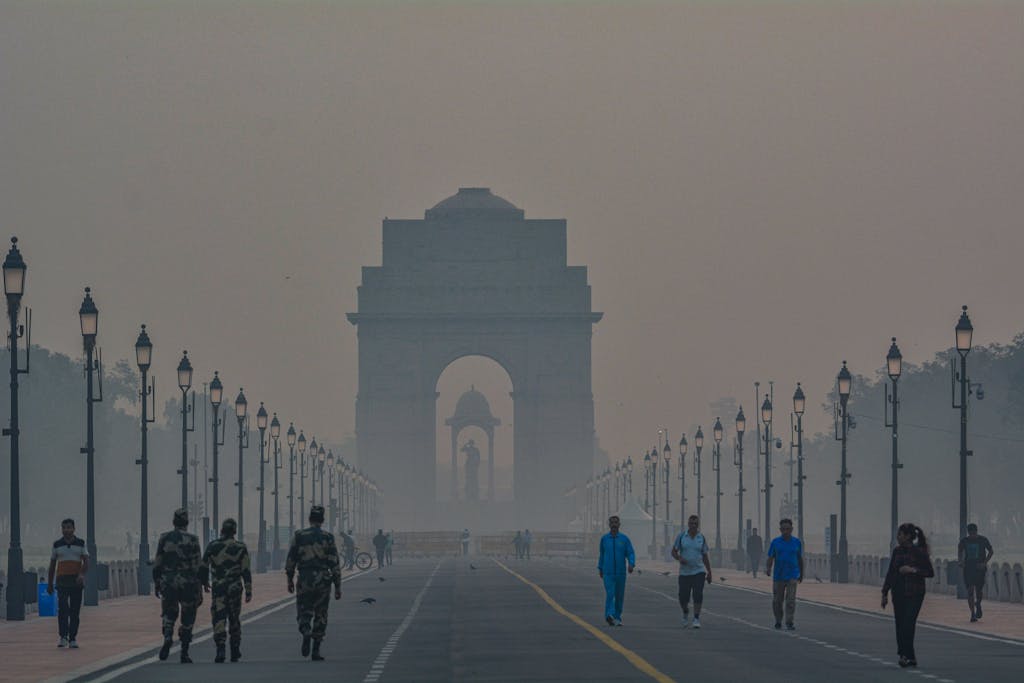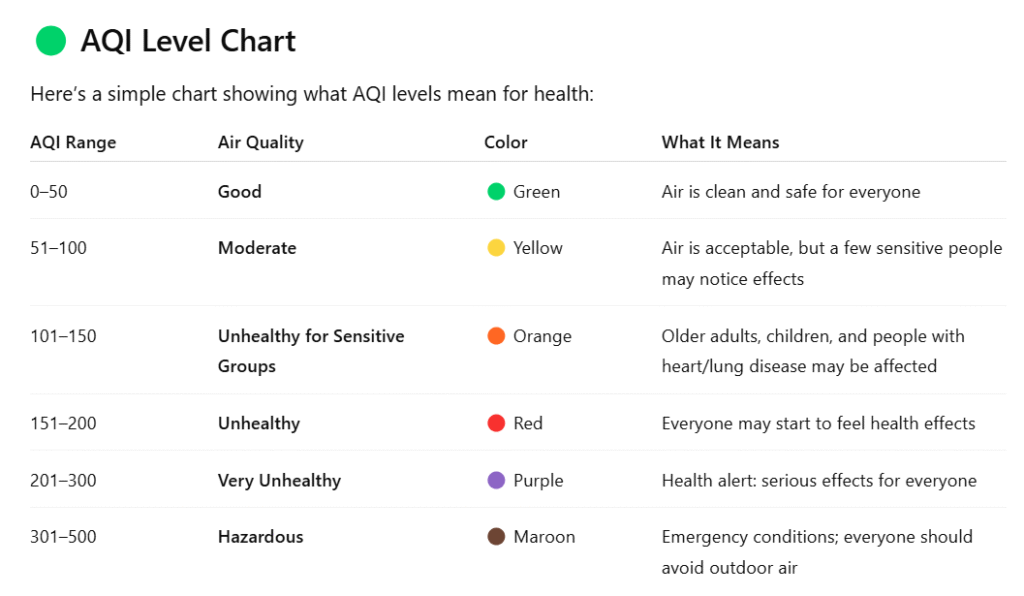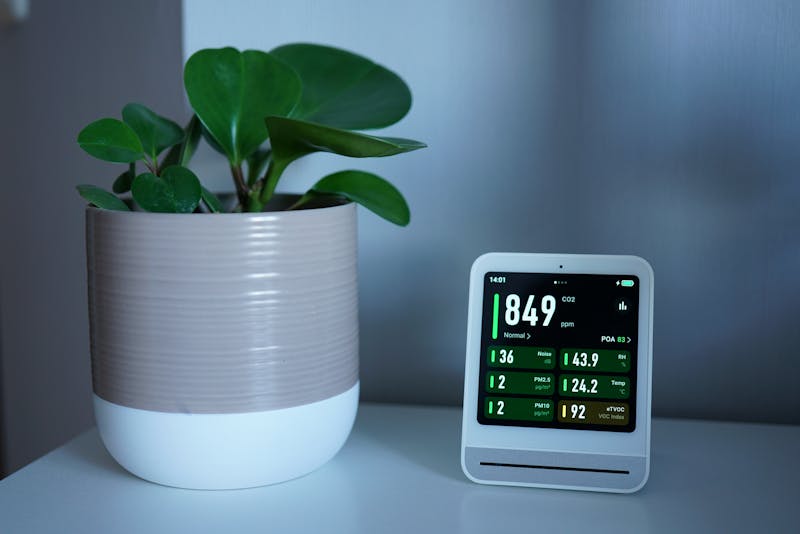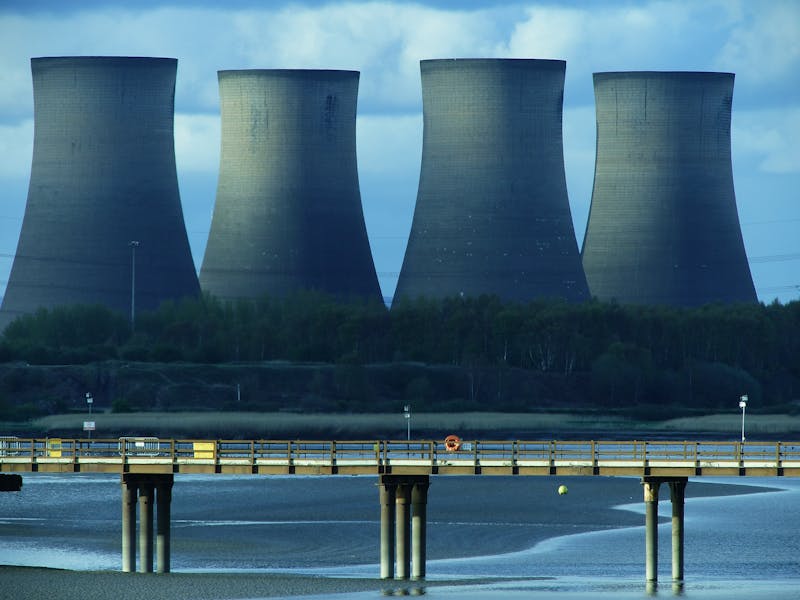A wildfire burns. Smoke fills the air, drifting for miles. Air quality alerts and warnings follow with advice to stay indoors and cover openings…
You’re at home chilling, reading this article on your couch. Zero wildfires in your area. The air in your house feels fresh. Or, is it? Did you know that cooking, heating, and cleaning can release harmful levels of airborne pollutants? Not just that, indoor air pollution has been linked to an estimated 3.2 million premature deaths annually, according to the World Health Organization.
So, let’s talk about air quality. What’s the fuss? Why are scientists, cities, entire countries (and your weather app) so obsessed with monitoring it, cleaning it, and even fighting over it? Should you actually care?
Short answer: YES!
Crack open a window, let’s break it down.
What even is air quality?

Air quality is basically a measure of how clean or polluted the air is. Think of it like a report card for the air you’re breathing right now.
See, the air you breathe is mostly Nitrogen (78%) and Oxygen (21%), with a sprinkle of carbon dioxide, argon, water vapor, and trace gases. However, air quality is about the stuff you don’t want in there – pollutants.
Here are the usual suspects:
Particulate Matter (PM2.5 and PM10) – Tiny solids and liquids that float around in the air. PM2.5 (particles smaller than 2.5 microns) is especially nasty because it can dive deep into your lungs and even enter your bloodstream.
Nitrogen Dioxide (NO2) and Sulfur Dioxide (SO2) – These gases come from burning fossil fuels (looking at you, traffic jams and power plants). They can mess with your breathing and even cause acid rain.
Ozone (O3) – Not to be confused with the good ozone layer up in the sky. Ground-level ozone forms when sunlight reacts with pollution from cars and factories. It’s a major component in smog and can irritate your throat and lungs.
Carbon Monoxide (CO) – A sneaky, odorless gas from car exhaust. It’s deadly in high doses, but even low levels can make you feel dizzy or tired.
Scientists track these pollutants – tiny particles that can mess with your health – and give the air around you a score.
One of the most commonly used scores is the Air Quality Index (AQI), a tool used to measure and report how clean or polluted the air is. The AQI calculation relies on levels of key air pollutants in the atmosphere because they can harm your health in high concentrations.
Each of these pollutants, such as PM2.5, PM10, Ozone, Sulfur Dioxide, Ozone, Nitrogen Dioxide, and Ozone, is measured in micrograms per cubic meter, or parts per million, and the worst-performing pollutant usually determines the final AQI number for the day or hour.
The Air Quality Index (AQI) gives a score between 0 and 500. The higher the number, the more polluted the air.

Why should you care?
Okay, so the air’s a little dirty, big deal, right? Actually, yeah. Poor air quality affects way more than you might think.
According to the World Health Organization, 99% of the global population lives in areas where air quality fails to meet WHO guidelines. That’s nearly everyone, and it comes with severe consequences:
A study found that air pollution kills more people annually than smoking.
PM2.5 kills. It’s linked to 7 million premature deaths every year worldwide.
Even short-term exposure to air pollution can trigger asthma, heart attacks, and strokes. Long-term exposure? Think cognitive decline, lung cancer, and increased risk of chronic diseases.
Even more sobering, air quality doesn’t just affect people in megacities like Beijing or Delhi. It’s a global issue, from rural areas burning biomass to developed cities grappling with traffic and industrial emissions.
The burden of air pollution is particularly heavy in the global south because of a lack of awareness and low access to clean cooking alternatives. More than 3 billion people rely on solid fuels for cooking and heating in low and middle-income countries, further compounding the problem.
So, besides the fact that air is quite literally in your lungs every second, air quality matters for other reasons, too:
1. Health
Clean air is as vital to your health as clean water. Poor air quality can damage your lungs even before you’re born, and its effects compound over time. Kids, the elderly, and people with pre-existing conditions are especially vulnerable.
2. Equity
Poor air quality disproportionately affects low-income and marginalized communities. These neighborhoods are often closer to highways, factories, and other sources of pollution. It’s an issue of justice as much as health.
3. Productivity
Studies have shown that cleaner air improves cognitive performance. Offices with better air quality see higher worker productivity, fewer sick days, and even better decision-making. Want to ace that meeting? Maybe crack a window.
4. Economy
The global cost of air pollution is estimated at over $8 trillion a year in health costs, low productivity, and premature deaths. That’s about 6.1% of global GDP, according to the World Bank.
What can you do?

You’re not powerless. Here’s how you can be part of the solution:
- Check your air quality daily. Use apps like IQAir, AirVisual, or even your phone’s weather app. If it’s a bad day, limit outdoor activity or wear a proper mask (like an N95).
- Ventilate smartly. Especially when cooking or cleaning indoors, because both activities can release pollutants.
- Green up. Plants alone won’t fix indoor air, but reducing synthetic materials and choosing low-VOC products helps.
- Advocate. Support policies that reduce emissions, from city bike lanes to clean energy incentives.
- Drive less, walk more. Cars are a major source of urban air pollution. Even switching to public transport can help.
Air quality might not be as climate tech or as tangible as a beach cleanup, but it’s everywhere, every day, and deeply personal. It touches your lungs, your brain, your unborn child, and your community. It’s climate. It’s health. It’s equity. It’s survival.
So yeah, the fuss about air quality? It’s real and it’s affecting you now.


